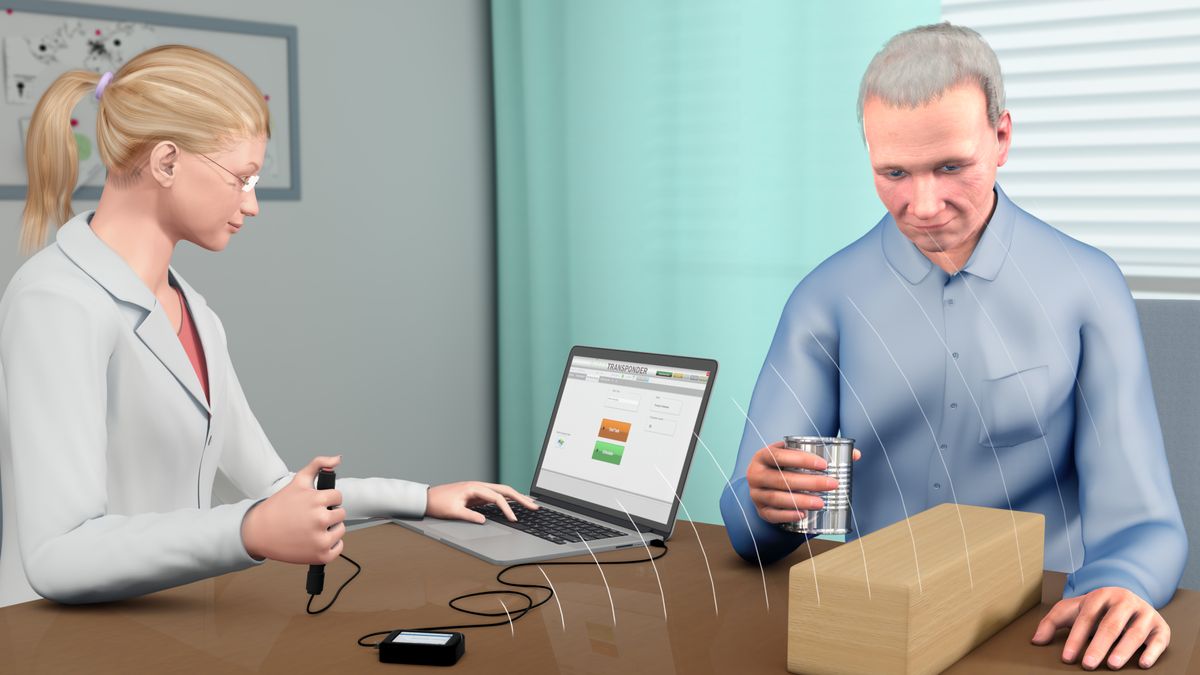An implanted device can improve the ability of certain stroke victims to relearn movement, according to the results of a nine-month-long study released today at the International Neuromodulation Society Conference in Edinburgh, UK. Doctors working with Dallas, Tex.,-based Microtransponder implanted a device that electrically stimulates the vagus nerve on the left side of a patient’s neck at the exact moments when he or she is doing movements that are components of standard physical therapy sessions. At the end of six weeks, 75 percent of patients who had their vagus nerve stimulated during physical therapy saw a clinically meaningful benefit, compared with 33 percent of those in the therapy-only control group, according to Microtranspnder. That number went up to 88 percent at 90 days, and continued to show gains at six months and nine months.
The therapy takes its cues from a theory Microtransponder worked out with scientists at the University of Texas at Dallas. Researchers there found that stimulating the vagus nerve increases “neural plasticity,” the brain’s ability to make new connections. Those new connections are exactly what’s needed in stroke rehabilitation, as the brain must route around damaged areas, recruiting healthy parts to take over from those that have been lost.
Great as this brain-goosing technique is, the window for greater plasticity is short lived, lasting only seconds after stimulation. So the electric pulses must be paired with the movements to be relearned.
“The vagus nerve is part of your attention system,” explains Microtranpsonder CEO Frank McEachern. “The stimulation makes the movements salient to [the patients'] brains to rebuild motor circuits.”
Microtransponder and UT Dallas worked out the mechanisms behind the therapy, showing that the structures near the terminus of the vagus nerve in the brain are key to the effect, and that the neurotransmitters acetylcholine and norepinephrine are also involved. Shorter term studies showed promise at improving stroke outcomes, but the company needed a long-term study to smooth the way for an even larger, so-called pivotal clinical trial, aimed at winning approval from U.S. regulators. That 120-patient trial is scheduled to begin in July at 15 sites in the United States and the UK, according to McEachern.
The study presented this week is a model for the upcoming pivotal trial. The patients had suffered strokes a year or more before entering the trial. They all had some upper limb movement, but had plateaued in their recovery and were still limited in their ability to carry out basic daily activities.
The trial was randomized and double blind, meaning neither the patient nor the therapist knew if a patient’s vagus nerve was being stimulated. Subjects in both the experimental group and the control group had the stimulator implanted in their chests. During therapy sessions, movements were paired with the press of a control button by the physical therapist. A typical session would comprise about 300 to 350 stimulation-paired movements. However, the buttons would cause an electrical stimulation only at therapy sessions with members of the experimental group. Control group members received “ineffective stimuli”—what McEachern describes as some stimulation but not every time. Quizzed later, control and active participants did no better than chance at guessing which group they were in.
After 90 days, the control group patients were given the option to receive the real therapy as well. Patients were also given the ability to relearn movements at home. They were given a magnetic wand that, when passed over the implant, set it to stimulate for a half second every ten seconds for 30 minutes. The patient would then use these recurring moments of heightened neural plasticity to practice whatever movement they felt they were still having trouble with. Subjects found this home study particularly valuable, according to McEachern. “Patients feel like they’re doing something about their conditions.”
Despite the focus on its upcoming stroke pivotal trial, Microtransponder is also working on therapies for tinnitus, traumatic brain injury, partial spinal cord injury, and post-traumatic stress disorder. “It’s a platform technology,” says McEachern.
Samuel K. Moore is the senior editor at IEEE Spectrum in charge of semiconductors coverage. An IEEE member, he has a bachelor's degree in biomedical engineering from Brown University and a master's degree in journalism from New York University.



